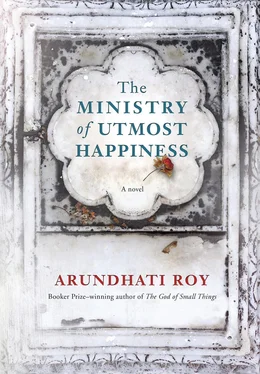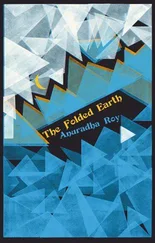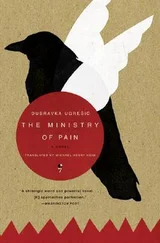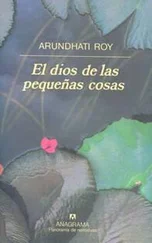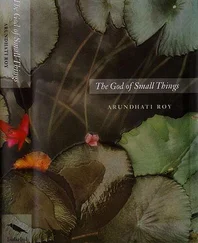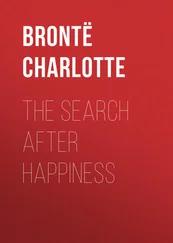Encouraged by the success and popularity of Tilo’s tuition classes, Ustad Hameed had begun, once again, to give music lessons to students he considered promising. Anjum attended these classes as though they were a call to prayer. She still wouldn’t sing, but hummed the way she used to when she was trying to get Zainab the Bandicoot to learn to sing. On the pretext of helping Anjum and Tilo look after Miss Jebeen the Second (who was growing up fast, getting naughty and being spoiled rotten), Zainab began to spend her afternoons, evenings and sometimes even nights at the graveyard. The real reason — not lost on anyone — was her heady love affair with Saddam Hussain. She had completed her course at the polytechnic and become a pudgy little fashionista who stitched ladies’ clothes to order. She inherited all Nimmo Gorakhpuri’s old fashion magazines as well as the hair curlers and cosmetics that had been put in Tilo’s room to welcome her when she first came. Saddam’s first, unspoken declaration of love had been to allow Zainab to flirtatiously paint his fingernails and toenails scarlet, both of them giggling all the while. He did not remove the nail polish until it chipped off by itself.
Between Zainab and Saddam, they had turned the graveyard into a zoo — a Noah’s Ark of injured animals. There was a young peacock who could not fly, and a peahen, perhaps his mother, who would not leave him. There were three old cows that slept all day. Zainab arrived one day in an autorickshaw with several cages stuffed with three dozen budgerigars that had been absurdly colored in luminous dyes. She had bought them in a fit of anger from a bird-seller who had the cages stacked on the back of his bicycle and was peddling the birds in the old city. Colored like that, they couldn’t be set free, Saddam said, because they’d attract predators in seconds. So he built them a high, airy cage that spanned the breadth of two graves. The budgerigars flitted about in it, glowing at night like fat fireflies. A small tortoise — an abandoned pet — that Saddam had found in a park, with a sprig of clover in one nostril, now wallowed on the terrace in a mud-pit of his own. Payal-the-mare had a lame donkey for a companion. He was called Mahesh for no reason that anyone knew. Biroo was getting old, but his and Comrade Laali’s progeny had multiplied, and they tumbled around the place. Several cats came and went. As did the human guests in Jannat Guest House.
The vegetable garden behind the guest house was doing well too, the soil of the graveyard being as it was a compost pit of ancient provenance. Although nobody was particularly keen on eating vegetables (least of all Zainab), they grew brinjals, beans, chilies, tomatoes and several kinds of gourds, all of which, despite the smoke and fumes from the heavy traffic on the roads that abutted the graveyard, attracted several varieties of butterflies. Some of the more able-bodied addicts were recruited to help with the garden and the animals. It seemed to bring them some temporary solace.
Anjum mooted the idea that Jannat Guest House should have a swimming pool. “Why not?” she said. “Why should only rich people have swimming pools? Why not us?” When Saddam pointed out that water was a key element in swimming pools and the lack of it might prove to be a problem, she said poor people would appreciate a swimming pool even without water. She had one dug, a few feet deep, the size of a large water tank, and had it lined with blue bathroom tiles. She was right. People did appreciate it. They came to visit it and prayed for the day ( Insha’Allah, Insha’Allah ) when it would be full of clean blue water.
So all in all, with a People’s Pool, a People’s Zoo and a People’s School, things were going well in the old graveyard. The same, however, could not be said of the Duniya.
Anjum’s old friend D. D. Gupta had returned from Baghdad, or what was left of it, with horror stories of wars and massacres, bombings and butchery — of a whole region that had been deliberately and systematically turned into hell on earth. He was grateful to be alive and to have a home to return to. He no longer had the stomach for blast walls, or for that matter for any kind of business enterprise, and was delighted to see how the desolate, ravaged specter that he had left behind when he went to Iraq had blossomed and prospered. He and Anjum spent hours together, shooting the breeze, watching old Hindi films on TV, and overseeing new plans for expansion and construction (it was he who supervised the construction of the swimming pool). Mrs. Gupta, for her part, had also retreated from worldly love and spent all her time with Lord Krishna in her puja room.
Hell was closing in on the home front too. Gujarat ka Lalla had swept the polls and was the new Prime Minister. People idolized him, and temples in which he was the presiding deity began to appear in small towns. A devotee gifted him a pinstriped suit with LallaLallaLalla woven into the fabric. He wore it to greet visiting Heads of State. Every week he addressed the people of the country directly in an emotional radio broadcast. He disseminated his message of Cleanliness, Purity and Sacrifice for the Nation, either with a fable, a folk tale, or an edict of some sort. He popularized the practice of mass yoga in community parks. At least once a month he visited a poor colony and swept the streets himself. As his popularity peaked, he became paranoid and secretive. He trusted nobody and sought no advice. He lived alone, ate alone, and never socialized. For his personal protection, he hired food-tasters and security guards from other countries. He made dramatic announcements and took drastic decisions that had far-reaching effects.
The Organization that had brought him to power took a dim view of personality cults, and a long view of history. It continued to support him, but quietly began to groom a successor.
The saffron parakeets that had been biding their time were set loose. They swooped into university campuses and courtrooms, disrupted concerts, vandalized cinema halls and burned books. A parakeet committee of pedagogy was set up to formalize the process of turning history into mythology and mythology into history. The Sound and Light show at the Red Fort was taken into the workshop for revision. Soon the centuries of Muslim rule would be stripped of poetry, music and architecture and collapsed into the sound of the clash of swords and a bloodcurdling war cry that lasted only a little longer than the husky giggle that Ustad Kulsoom Bi had hung her hopes on. The remaining time would be taken up by the story of Hindu glory. As always, history would be a revelation of the future as much as it was a study of the past.
Small gangs of thugs, who called themselves “defenders of the Hindu Faith,” worked the villages, gaining what advantage they could. Aspiring politicians jump-started their careers by filming themselves making hateful speeches or beating up Muslims and uploading the videos on to YouTube. Every Hindu pilgrimage and religious festival turned into a provocative victory parade. Armed escort teams rode beside pilgrims and revelers on trucks and motorcycles, looking to pick fights in peaceful neighborhoods. Instead of saffron flags they now proudly waved the national flag — a trick they had learned from Mr. Aggarwal and his tubby Gandhian mascot in Jantar Mantar.
The Holy Cow became the national emblem. The government backed campaigns to promote cow urine (as a drink as well as a detergent). News filtered in from Lalla strongholds about people accused of eating beef or killing cows being publicly flogged and often lynched.
Given his recent experiences in Iraq, the worldly Mr. D. D. Gupta’s considered assessment of all this activity was that in the long run it would only end up creating a market for blast walls.
Читать дальше
